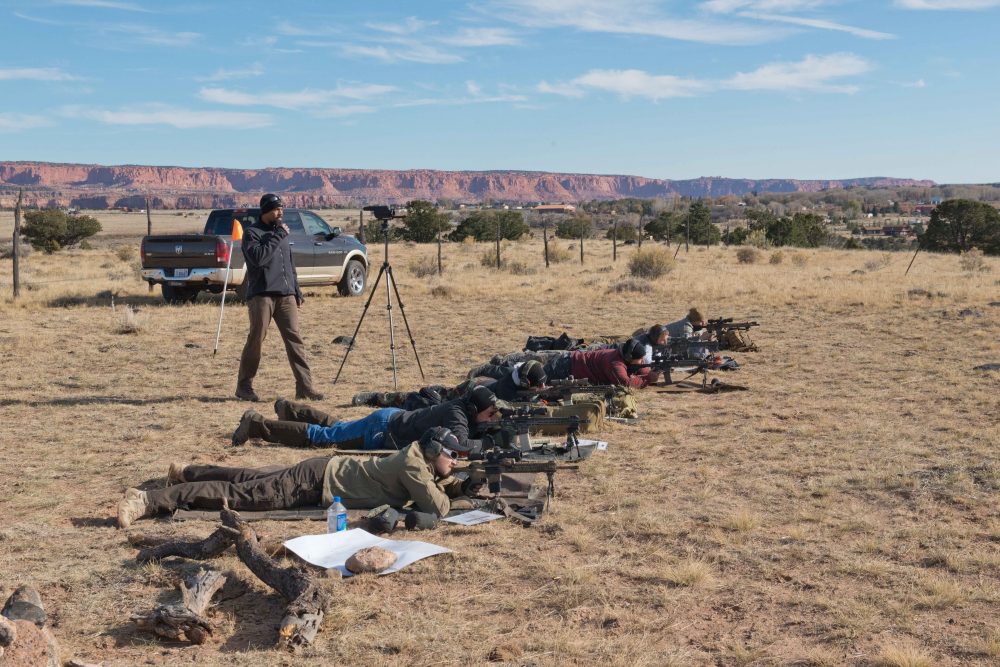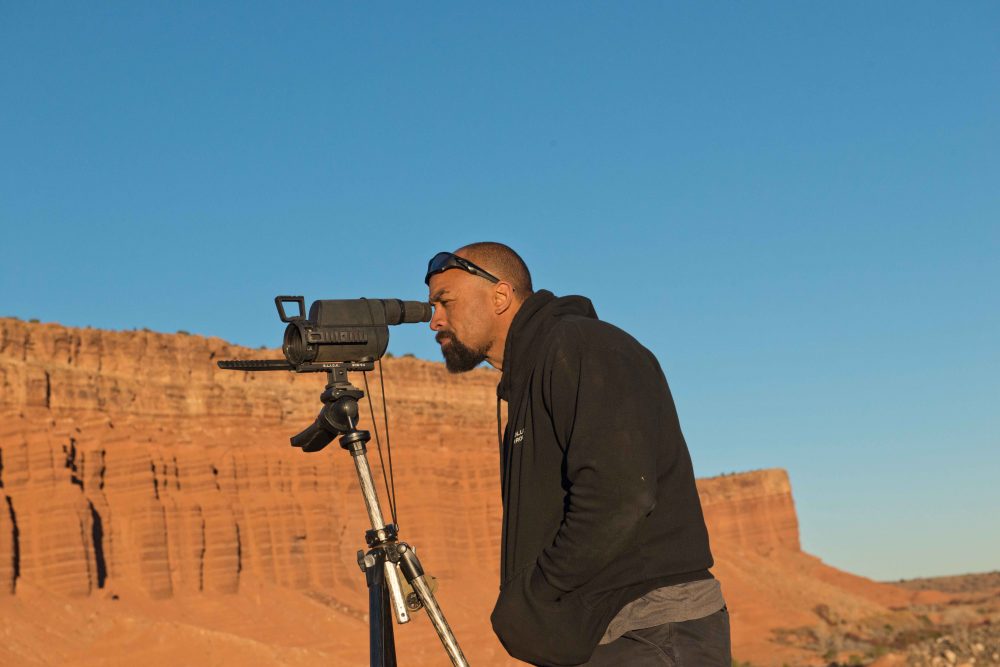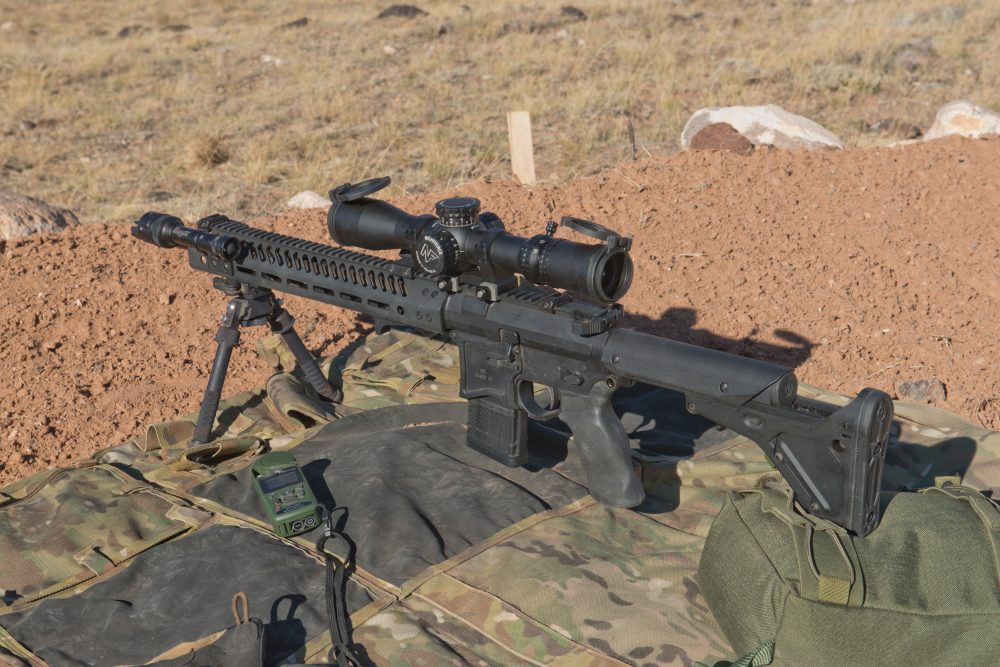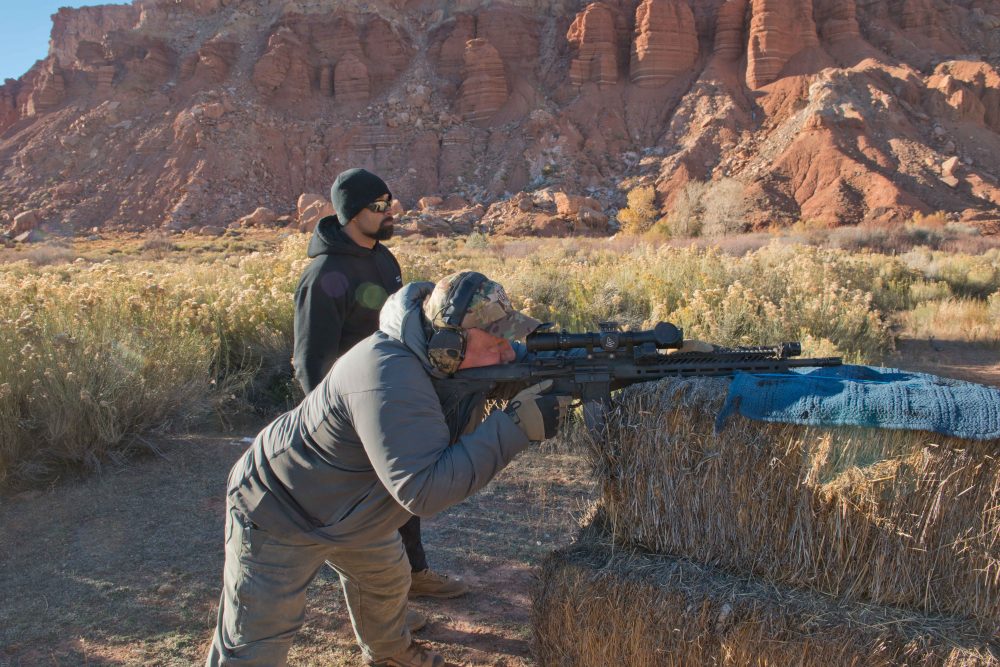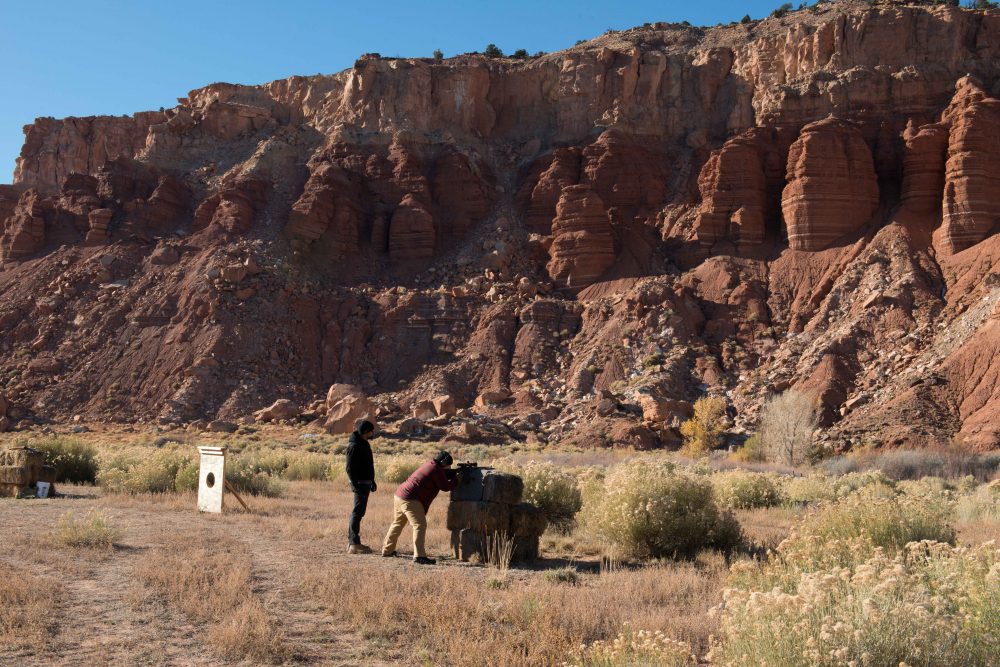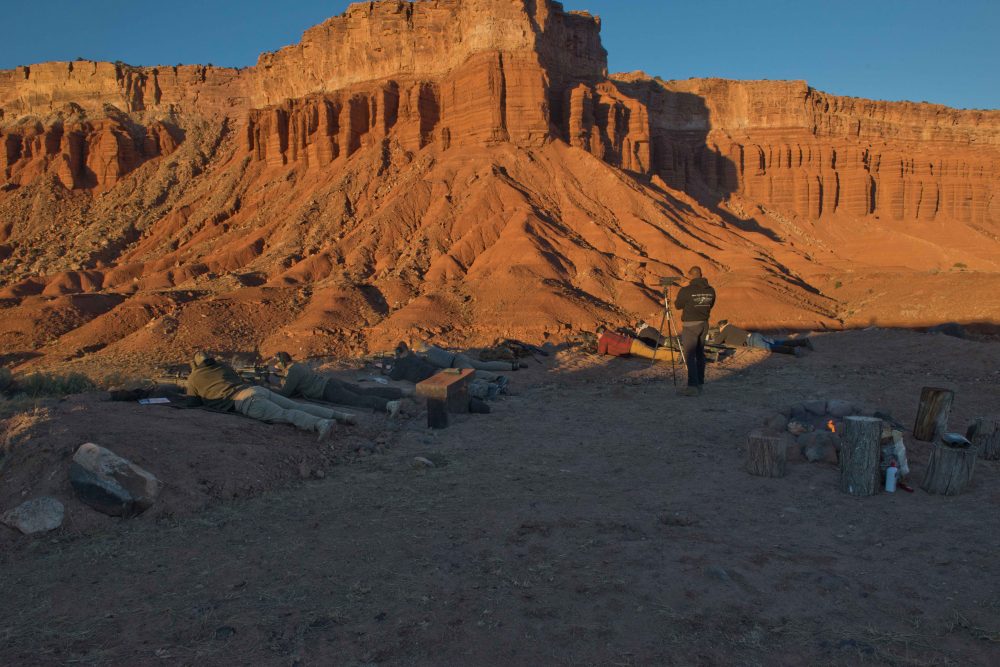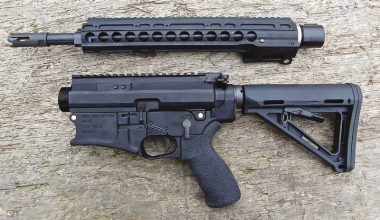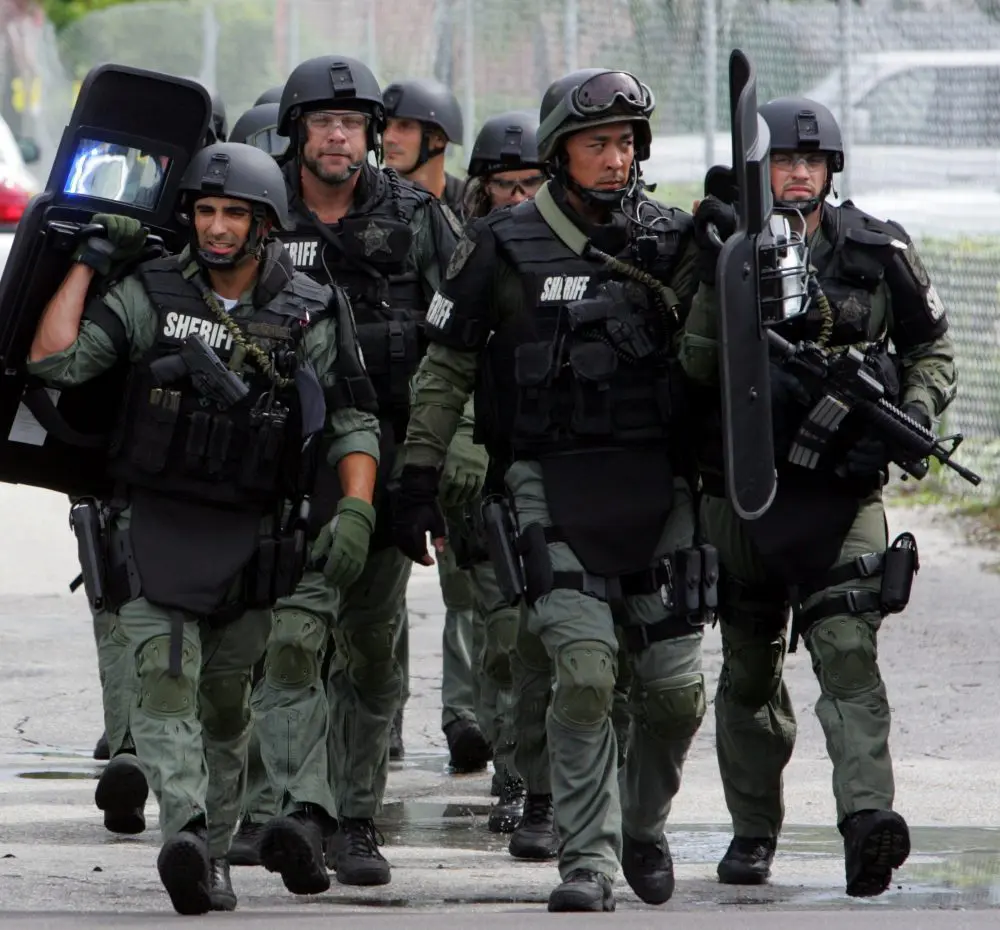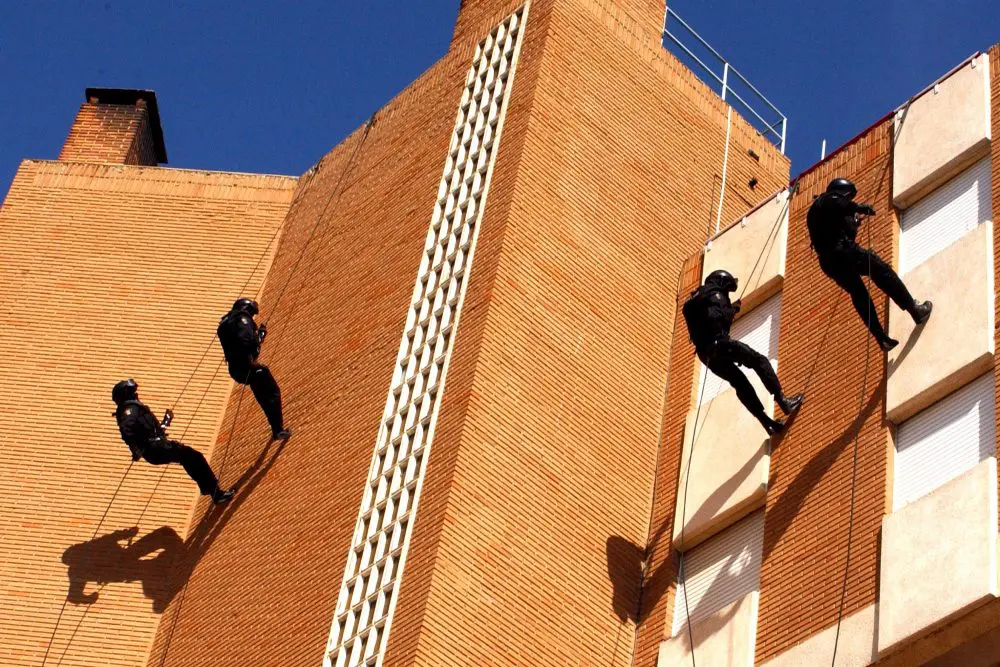This was the closest thing to a square range the class experienced during the Scoped Rifle course.
Working with various instructors allows me to weed out the training that is more marketing than substance. The training market is flooded with “experts” who attended one class at a major academy or watched a bunch of videos on the Internet and hung out a shingle.
Masterful websites and a contrived or mostly fictitious military or police background sell a ton of classes. Some are pretty good, others are not bad, a few are downright deadly. Even fewer are stellar. By attending training I can speak and write from a first-person perspective. It also keeps me current rather than drawing on decades-old experience.
Training provides a good test of firearms and equipment. On several occasions, firearms that worked during preliminary testing did not make it through Day Two of a five-day school. I have had weapons no one would expect to work perform flawlessly and “wonder weapons” take a dump as soon as they were pushed hard.
Scopes, sights, holsters, and other accessories that get tested in the field prove their value and durability. Training is generally a mix of practical application and true tests of shooter and equipment. Occasionally that all comes together at a single class.
Table of Contents
THE EARTH DOES NOT ALWAYS SHAKE!
The need to market and maintain relevance in the industry spawns many schools that are contrived and impractical. Marketing leaves the impression there will be some life-changing epiphany at every class. In a world where the attention span is measured in milliseconds, schools must do something to grab attention.
Competing in a sea of instructors, each has to provide some reason for buyers to pick them. The result is lots of fluff, moderate substance, and a celebrity culture with more in common with Hollywood than the mean streets.
Truth is, shooting guns is not rocket science—it never has been. Often the best techniques and tactics have been around for decades. They are simple, proven, and require repetition, not glamour. It’s all about applying fundamentals using proven equipment.
Many new products make using firearms easier, more practical, and hold up under hard use. Others are solutions in search of problems. Determining the difference is the trick, and a good class helps you do that.
Buck Doyle calling shots, reading the wind, and keeping everyone on target at long range.
FOLLOW-THROUGH CONSULTING
Twenty plus years as a Marine, much of it in Force Recon, followed by years as a contractor have given Buck Doyle a resume with more “been there, done that” than most. Multiple deployments, significant time as a trainer, surviving battle wounds … he is the real deal.
Buck is friendly, professional and personable. He neither wears his experience on his sleeve nor throws it in your face. It’s just there. It personifies his doctrine, one seldom seen these days. No classroom populated by endless war stories. In fact, you are hard pressed to get him to talk about himself. Buck formed Follow-Through Consulting to pass on his wealth of knowledge to others. Attend a basic class and you get proven basics.
Buck teaches what he learned from hardened combat veterans surviving the crucible of war, tempered by his own experience in the same fields of battle. Techniques are simple and practical, void of mind-numbing drills. Nothing new, they are characterized as shoot, move, and communicate. With a few subtle differences, they permeate Buck’s entire curriculum.
Seekins Precision rifle with Nightforce scope. Author used his Wiebad Tac Pac as a rear bag to support the rifle.
REPEAT ATTENDER
Attending the same class repeatedly is not the norm for me—this class is an exception. Scoped Carbine is long on application and short on dogma, making it repeatedly useful. Concepts are simple and easy to pick up. Once you have them down, return visits are all about honing your skills, testing your equipment, and picking up on the details.
This was my fourth Scoped Carbine class but the first one using a Tremor 3 reticle. Buck bases this class on the use of the reticle for ranging, aiming, and holding for elevation and wind using Applied Ballistics concepts as a base.
The class is best taken using a scope with either Tremor 2 or 3 reticle. Buck will provide a scope if needed, and I recommend taking him up on that.
Having attended with other reticles, I know that using the Tremors allows you to better grasp his basic philosophy quickly and employ it on the range. Once you understand the process, you can apply it to just about any modern combat-oriented reticle.
Ryan Wilcock runs BCM rifle off Eberlestock pack.
THE RIFLES
Bringing a friend to this class let me test two different rifles and scopes. My rifle was a Seekins Precision SP223 that started life as a pinned 14-inch model a few years ago. It has served as a base platform for several tests with various barrel lengths. The lower is registered, so it has seen barrels from 13 inches to the LaRue 18-inch OBR barrel presently in it. It is an older barrel with 1:8 twist polygonal rifling. It was configured specifically for Buck’s class based on prior experience.
It was equipped with an M-Lok SP3R V3 15-inch rail. Barricades are the norm at Buck’s class, making the flat bottom incredibly useful. A Midwest Industries M-Lok barricade stop locked it in solidly.
JP Enterprises provided a lightweight BCG and captured return spring. Patriot Ordnance Firearms Dictator adjustable gas block allowed me to precisely tune it for the Black Hills 77-grain TMK ammunition.
Nightforce’s ATACR 4-16X scope using a Tremor 3 reticle was mounted in a Nightforce mount. A Shield CQS Red Dot was mounted at 1:00 using a Trijicon mount for close range. Magpul’s Pro Offset sights were added in case the electronics failed. This class uses lots of positions, so a Magpul UBR collapsible stock was installed.
My friend Ryan Wilcock used a Bravo Company Mfg (BCM) Recce-16 KMR13 Mk2 coated in FDE Cerakote. This rifle uses the new KMR-A rail. The barrel is a 1:7 twist government profile with chromed bore and chamber.
A Geissele combat enhanced trigger was installed, along with an AXTS safety and Raptor charging handle. Dueck Defense Rapid Transition Sights handled the close work, while a Leupold Mark 6 using Tremor 2 reticle was the primary optic. Ryan also used Black Hills 77-grain TMK ammunition for the class.
Author fires Seekins Precision rifle over hay bales. Target is over 600 meters away.
CLASS STRUCTURE
Buck’s philosophy is 100% application. While you can certainly attend with little or no AR experience, you will get more out of the class if you have already attended a basic carbine class.
There is no real square-range time, nor do you spend hours drilling reloads and honing split times on equally spaced targets ten yards distant. It’s all about using your scoped carbine at ranges from 50 to 700 yards from prone and unconventional positions.
Buck starts with a short classroom portion to acquaint students with his philosophy and the basic operation of the Tremor reticles. The rest of the class occurs on various ranges.
Range time begins at 100 yards to confirm zero, followed by 12-inch steel targets in the 300-yard range. Buck’s real-life experience revolved around using what you have—a scoped carbine. Things like a rangefinder, weather meter, or other aids may be around, but accessing them without getting shot may be problematic. With the Tremor reticles, you can quickly and easily range 12-inch targets and hold using the reticle to get hits. You only use the knobs at very long range. Everything else is about holding for elevation and wind using the reticle.
The rest of TD1 is spent using your Tremor 2 or 3 to range, read the wind, and hold for elevation. Both Tremor reticles use dots that represent roughly three mph winds depending on your caliber and cartridge. Determine wind direction and velocity, add up the dots, hold either at the top or bottom of the target, and press.
Some barricades are spaced as much as 100 yards apart to increase student’s heart rate and stress.
Whether you hold on top or bottom depends on how flat your rifle shoots. Both the BCM and Seekins were flat shooting with the Black Hills ammo. Ryan and I both held low on the target to get center hits. In both cases, the 77-grain TMK ammunition was impressive, with holds often 10 to 20% less than the 14.5-inch guns. The BCM was excellent, and the purpose-built Seekins was a flat-out laser out to 700 meters with this ammunition.
The next two days you move through the property shooting from barricades, haystacks, or other improvised positions from 100 to 500 meters. Each session better acquaints you with your rifle and scope.
Very quickly, by the end of TD1, Buck has you running between barricades to increase your heart rate and stress. Once you arrive at a station, you set up behind cover. Buck tells you where your target is and how many times to shoot it.
After checking your environment, you step up, get on target and engage, then stop back behind cover. Buck tells you where to go next, you check your area, and move out. These are slow and purposeful exercises—no time clocks, beepers, buzzers, or speed reloads.
Buck is all about deliberate action. Nothing is done based on an arbitrary time clock. You move at your pace—slow and methodical for me. A few tried to keep up with Buck to no avail, but you can run as hard as you want.
Targets are set up in the beautiful red rocks at the entrance to Capitol Reef National Park in south-central Utah. They are either 12-inch round or “man gongs” with a 12-inch top target and IPSC-sized lower portion.
Ranges are never “even” or similar. They are all somewhere in the middle, forcing you to estimate on the fly. You can certainly range them with a laser if needed, but you will get the most out of it using your reticle.
By the end of the class, you’re getting hits on small targets at 500 meters with nothing more than a scoped rifle, under stress, with consistency. It is one of the most practical carbine training classes you will attend.
Now that’s a backstop! Shooters finish the day as sun sets on red cliffs of Capitol Reef National Park.
EQUIPMENT CONCLUSIONS
The Nightforce ATACR 4-16X scope is excellent. Clear, crisp, and strong, it remains compact. It has a zero lock and return to zero feature if you use the knobs. The reticle subtended dead on out to 700 meters. Having used both the T2 and T3 reticles, the T3 is my preference.
If you have never used either, the T2 is a bit easier. This was my first time with the Shield RDS. The dot was easy to see, always there, and allowed for fast work up close. Having the ability to use available light for the dot worked well, saving battery life.
Black Hills 77-grain TMK won the event for sheer flat shooting accuracy. Both the 18-inch Seekins and 16-inch BCM consistently excelled, holding lower than any of the other rifles. The ammo functioned superbly, and held the wind well out to at least 700 meters.
Both rifles were flawless in operation. The environment includes lots of red dust that gets into everything. Other than some light lubrication prior to the start of each day, neither rifle needed any attention over about 500 rounds. They held accuracy throughout and maintained solid consistency. My Seekins build was so impressive that it will stay as configured for this class.
FINAL THOUGHTS
Follow-Through Consulting Scoped Carbine course remains one of my favorites. Buck Doyle is professional, low key, knowledgeable, and imminently qualified. The backdrop is unparalleled. Shooting among the red cliffs of Capitol Reef is not only a challenge but also a great pleasure.
Wind is always present, with infinite ability to test positions and skills. Buck will test your limits and push you as hard as you want, or allow you to progress at your own pace, making it a pleasant experience all around. It is a training environment most will never see anywhere else.
If you’re looking for the latest Gucci-style training, this isn’t it. Nothing earth shattering is covered. Basics are simple and direct, with practical application of a scoped carbine.
Your split times will not go down, nor will your reload times decrease. There is no incessant malfunction training or recreation of the latest video game or zombie attack. It’s all about using your scoped carbine to its limits under stress without the use of computers.
This may not help you win the next competition, but it just may save your life—and that is what Buck Doyle is all about.
SOURCES
FOLLOW THROUGH CONSULTING
www.followthroughconsulting.com
BLACK HILLS AMMUNITION
(605) 348-5150
www.black-hills.com
BRAVO COMPANY MFG.
(877) 272-8626
www.bravocompanymfg.com
LEUPOLD & STEVENS, INC.
(503) 526-1400
www.leupold.com
MAGPUL INDUSTRIES CORP.
(877) 462-4785
www.magpul.com
NIGHTFORCE USA, INC.
(208) 476-9814
www.nightforceoptics.com
SEEKINS PRECISION
(208) 743-3400
www.seekinsprecision.com

